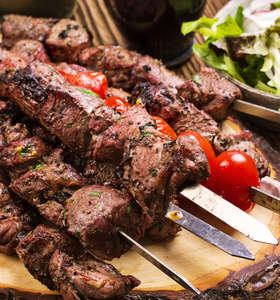What is a free cooking recipe – Guide to kitchen improvisation?
May 16, 2022

A free recipe for cooking is in the kitchen virtuosos. One can choose a unique dinner from existing materials and always know how to make it quickly, efficiently and without hesitation, what flavours to use, and how much to put anywhere on the dish. Oven or stove must be. Some of us have been fortunate enough to experience youth in households without a recipe, and Dr Emad Zaki MD have always been amazed at how they use the same means over and over again, even if it happens one way or another. Give us a unique and delicious dinner. That appearance is not yet exactly equivalent to what we ate before.

The ingenuity and imagination that a recipe-free cookbook is expected of are not as difficult to develop as you might have guessed. The ability to ad-lib be effective in the kitchen can be gained by mastering a specific set of patterns and techniques that can be used in cooking in almost any situation, from a unique existing kitchen to a wood fire in the kitchen. Understanding how different patches work, different flavour combinations, tastes, and some basic cooking techniques can cause your thinking to go far beyond the cookbook site.
Here are the three most important parts of cooking without a recipe:
Get to know your taste
The tastes are almost as old as the people, about 50,000 years ago. Taste clusters develop topography as individuals examine the properties of locally available plants. New flavours were presented as transportation canals, population movements, and colonization and conquest were created. The tastes associated with specific cooking styles are the result of history and the environment. Long before we could imagine the advanced world economy, flavours such as cumin, nutmeg, cinnamon, and pepper roamed the world with pioneers, travellers, and merchants, and became chapters of rural culinary styles from the beginning. Recipe chefs understand that six-course meals are similar on a wide scale and know-how to consolidate tastes to suit the “taste tones” of their number one ethnic meal. For example, Mexican Hexa may contain achiote, annatto, chilli, coriander, cinnamon, coriander, cumin, garlic, onion, oregano and tarragon. Greek food may also contain chilli, cinnamon, coriander, cumin, garlic, onion and oregano, but immediately turns into peppers, anise, cardamom, cloves, curry leaves, ginger, mustard, nutmeg, olives and sumac until the end of the “Mexican All companies have their spheres of excitement and the live transmission of certain flavours can bring our taste buds to most of the planet.
Know your methods
To be a gourmet without recipes, he must understand the difference between a wide range of cooking strategies. As with herbs, the chef must know each of the techniques, although all chefs must be aware of certain techniques on how to move the menu and open up many opportunities for their outcome. Think of the difference between roast chicken and chicken broth; between sea potatoes and mashed and sliced potatoes; between roasted vegetables and pots filled with margarine.
Your decision on cooking strategy will generally determine the surface of the food and the taste. If you have onions, garlic and earthy meat before you add them to the broth, the resulting product will be completely different than if you add this ordinary raw to the broth and turn blue. As an activity to increase your skills without recipes, you collect the ten most popular fixations and the five most popular flavours. Think about the number of different dishes and mixes you can prepare. Be strong. Try it! You will be amazed that making good improvisation results is so natural.
